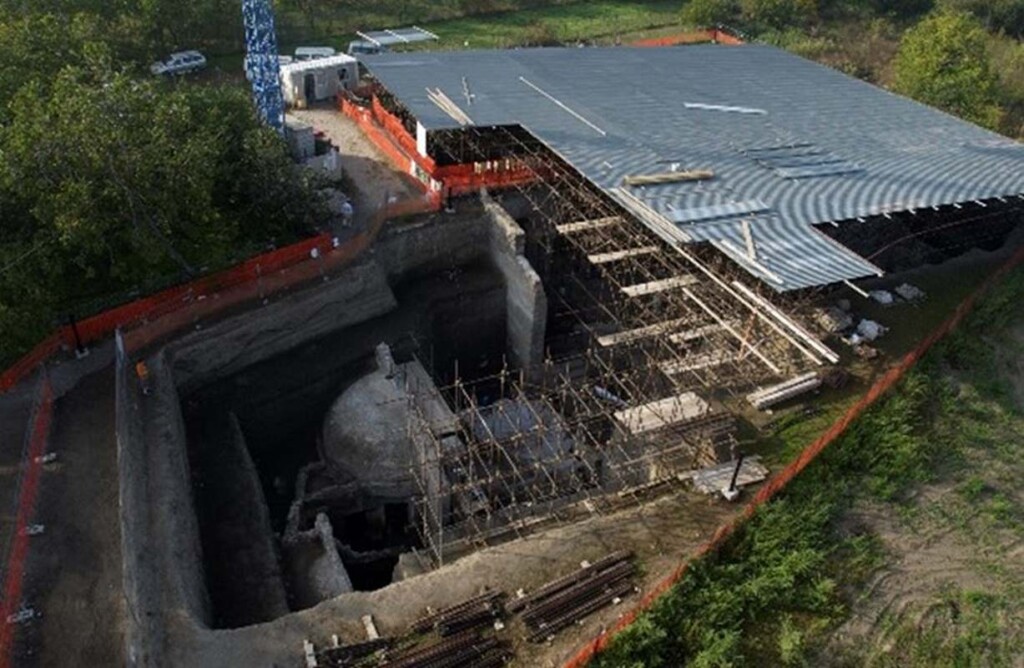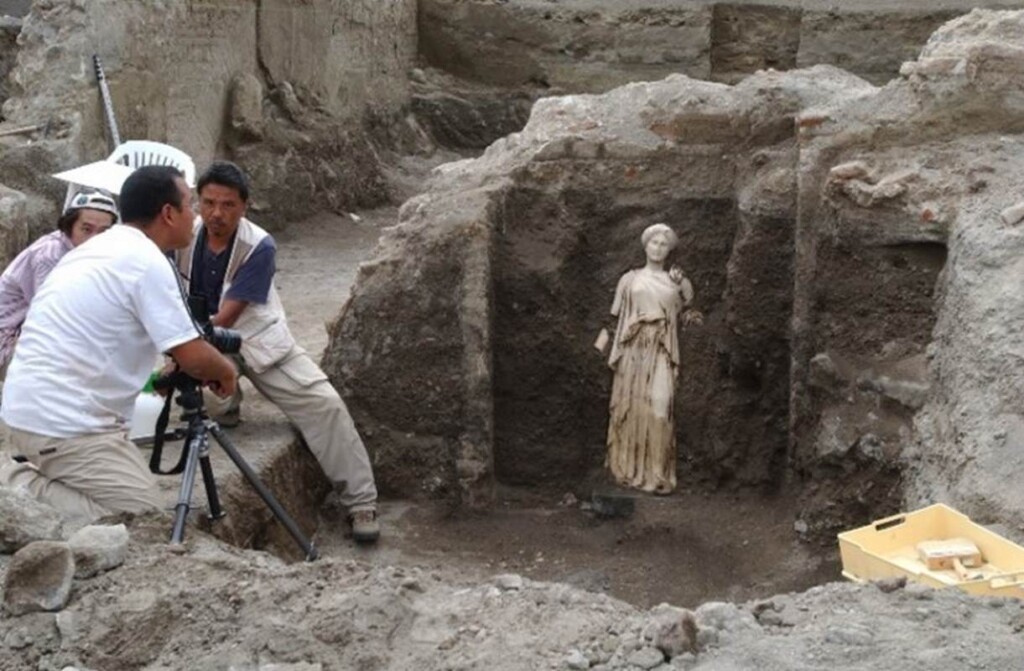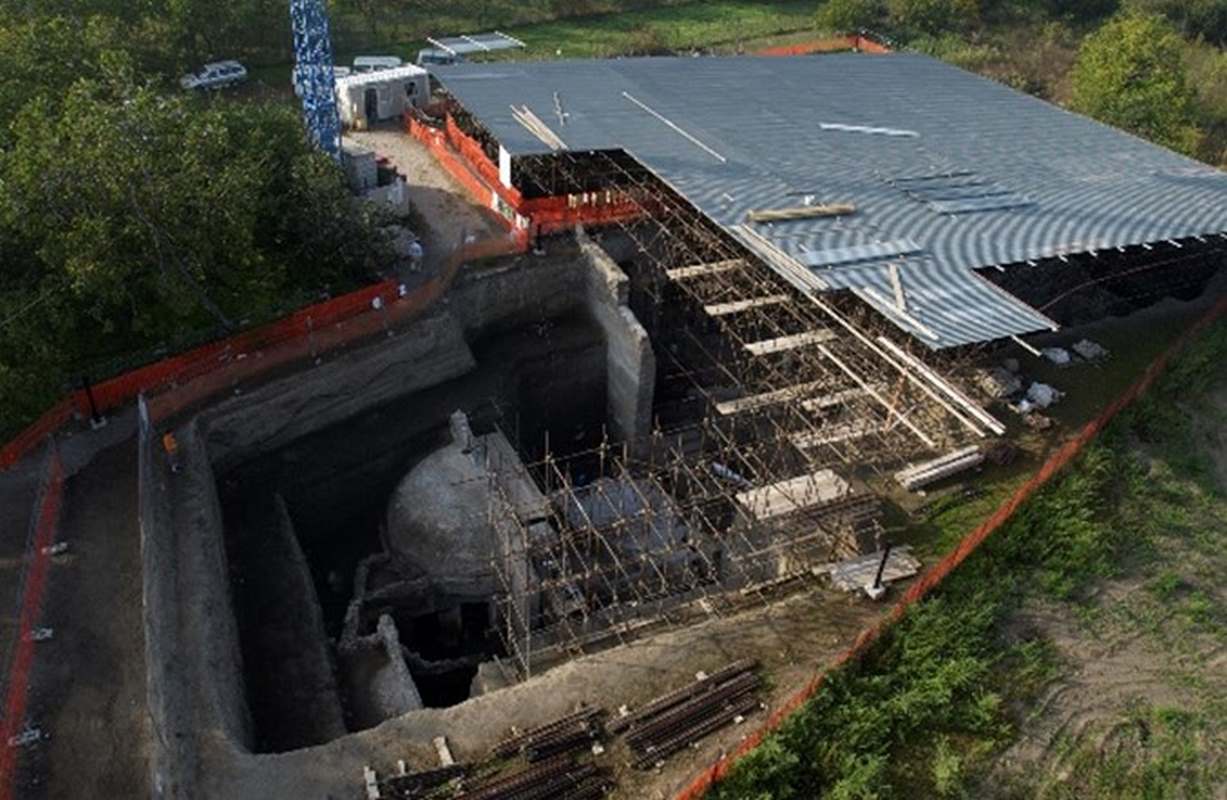
Excavations of a Roman villa dating to the start of the Imperial era show it may belong to the greatest of all the Roman emperors, Caesar Augustus.
Called the Somma Vesuviana, the villa was partially destroyed and buried by the same eruption that buried the city of Pompeii in 79 CE, but is located on the northern slopes of the mountain, the site where Augustus is said to have died at the end of a long rule.
Roman sources say he died in a villa north of Vesuvius, but scant further details remain. What might illuminate the matter would be evidence of extensive wealth worthy of a man who, in his own words, found Rome a city of stone and left it a city of marble.
At the moment, the Somma Vesuviana is being excavated by a team of Japanese researchers from the University of Tokyo who have been working in the area since 2022, and who recently released a statement on their progress.
“This archaeological discovery will be a key to unlocking an important phase in human history: the beginning of the ancient Roman Empire and emperor worship,” the translated statement read.
Indeed Roman sources say that the site where Augustus died was consecrated following his death, and the original structures buried by Vesuvius were used as an outline for a subsequent building constructed over top of it.
“[R]ecent excavations have revealed some rooms of the building before the eruption in 79 CE. So far, four rooms and spaces have been identified,” the statement explains.
“In particular, in what we call Room 22, as many as 16 earthenware vessels (amphorae) were found for transporting and storing wine and other items, many of which remained leaning against the walls. On the floor of a small space called Room 25, a large amount of charcoal and ash from the fire was found. This is thought to be the part of the kiln where water is thought to have been boiled.”
The evidence of a fire-heated bath points to someone of great personal wealth, though many Romans among the patrician class had such bathing halls. Greater evidence for it being Augustus’ villa comes from the second structure.
SEE ALSO FROM POMPEII: Alongside What Appears to Be Pizza, Recent Pompeii Excavations Reveal Yet More Hidden Treasures
Much larger, and featuring brick arches, marble columns, and marble statues such as depictions of Dionysus, the god of wine, were all newly installed. The Japanese team described the second structure as “public in nature” due to its size and ornamentation.

By the time of the end of the Western Roman Empire, the building had been adapted for mass wine production all before being buried yet again by the smoking behemoth to the south around the turn of the 5th century.
Born Gaius Octavius, part of the Gaius family and great nephew of a certain Gaius Julius, Emperor Augustus fought alongside Marcus Antonius to finish the final Roman civil war—the one which sprouted in the wake of Julius Caesar’s assassination.
MORE BIG ROMAN FINDS: 2,000-Year-Old Home Found Under a Seaside Playground May Be Pliny the Elder’s Villa
The next chapter of this famous story saw Antonius and Egyptian Queen Cleopatra attempt to leverage her son—Julius Caesar’s alleged child—to seize power in Rome, only for the now-grown and brilliant military mind of Augustus to defeat him.
The final chapter saw Octavius receive the title “Augustus” or Exalted One, from the Roman senate and then doubling the size of the empire, initiating the Pax Romana, in which the Roman interior, and even recently conquered provinces, were almost entirely free of conflict, and created a stable state which persevered for several centuries, ushered Christianity into power, and birthed the nation-state of Byzantium.
His famous last words were Acta est fabula, plaudite, which in admittedly dramatized English means “Have I played the part well? Then applaud as I exit.”
SHARE This Exciting Discovery In Southern Italy…




















